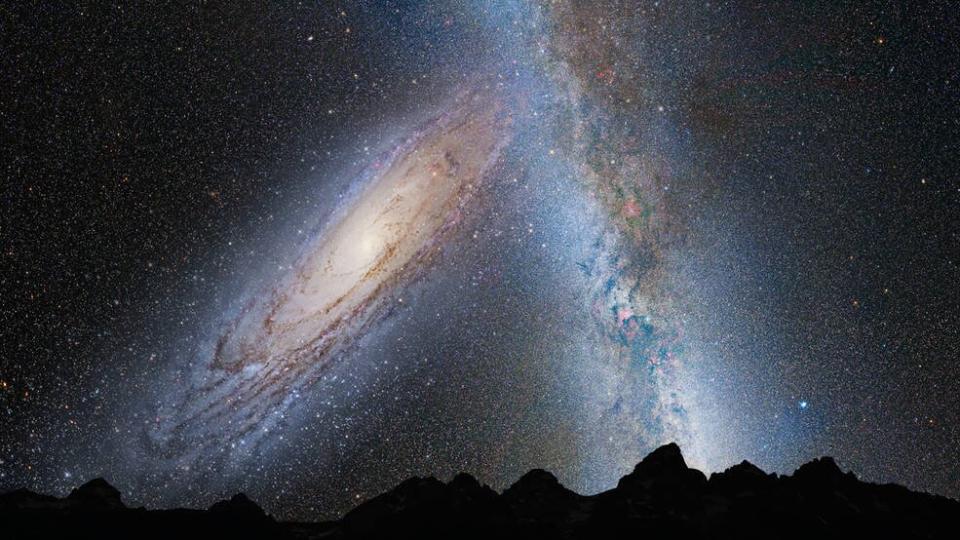A New Telescope Image Captured a Spectacular View of 2 Merging Galaxies, Foreshadowing the Milky Way's Fate
We've seen a handful of spectacular things from interstellar telescopes this year—including far off galaxies, planetary nebula, and up-close photos of the planets. It's time to add another one to the list, thanks to the Gemini North telescope in Hawaii, which captured a new image of two colliding galaxies that will eventually merge into one millions of years from now.
The galaxies—NGC 4568 and NGC 4567—are also referred to as the Butterfly galaxies because their convergence caused two-lobed shapes to combine, giving the celestial object the illusion of butterfly wings. NGC 4568 and NGC 4567 are located 60 million light-years away from Earth and will form a single elliptical galaxy in approximately 500 years, according to NoirLab, which operates the telescope.
Though it won't occur for quite some time, a galactic merger is considered to be one of the most spectacular events in the universe. Currently, NGC 4568 and NGC 4567 are still 20,000 light years away from on another, which the lab states is about the distance from Earth to the center of the Milky Way.
Each galaxy still maintains its original shape, but that is slated to change as the convergence progresses. According to the lab's statement, the galaxies will draw together and combine, triggering bursts of intense stellar formation that will distort their structures. Over time, they will swing past each other in ever-tightening loops that will draw out stars and gas until a single sphere-shaped entity is produced.

Courtesy of NASA
This event gives us a glimpse into what will happen when the Milky Way merges with the Andromeda Galaxy—its closest cosmic neighbor. According to NASA, the event will occur about four billion years from now and will give the Milky Way and the nearby galaxy a major makeover. It's likely that the merger will fling the sun into a new region of our galaxy—but as are as we know, the Earth and our solar system aren't in danger.

